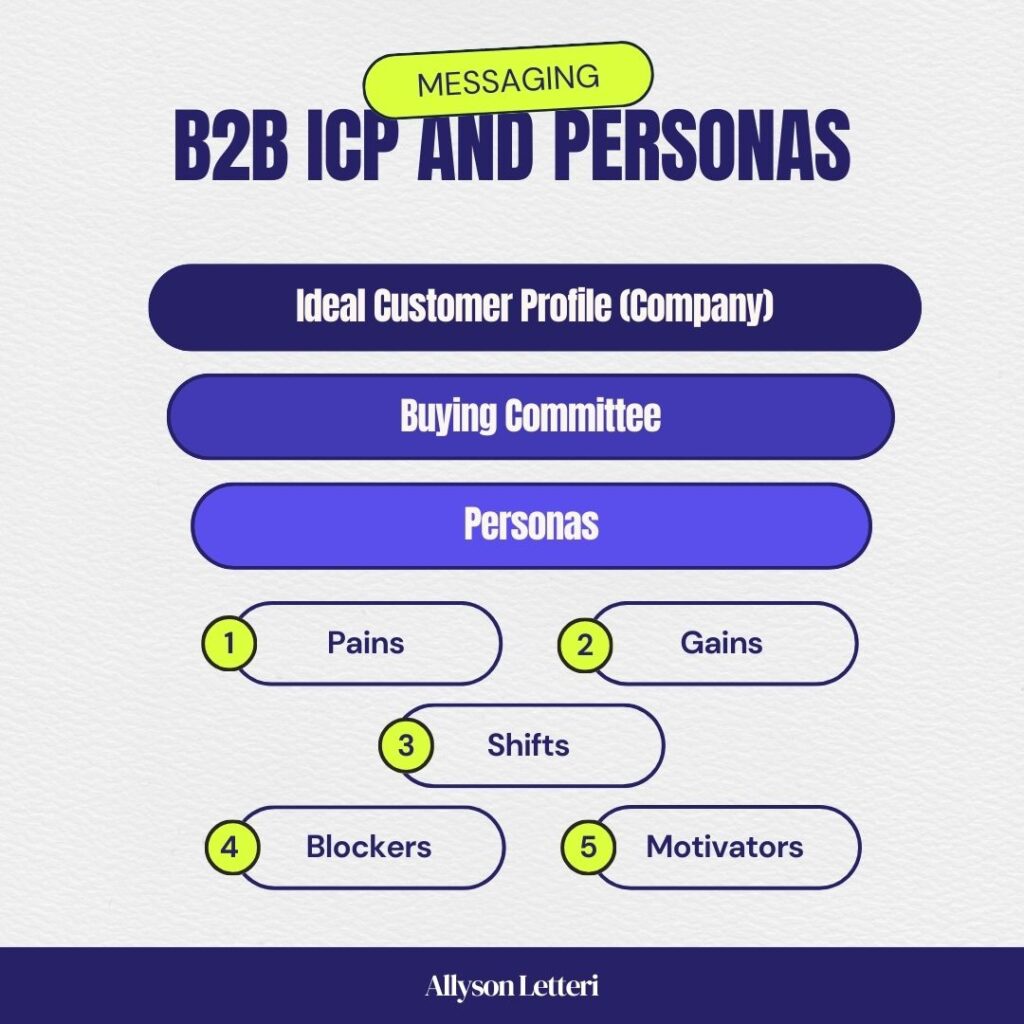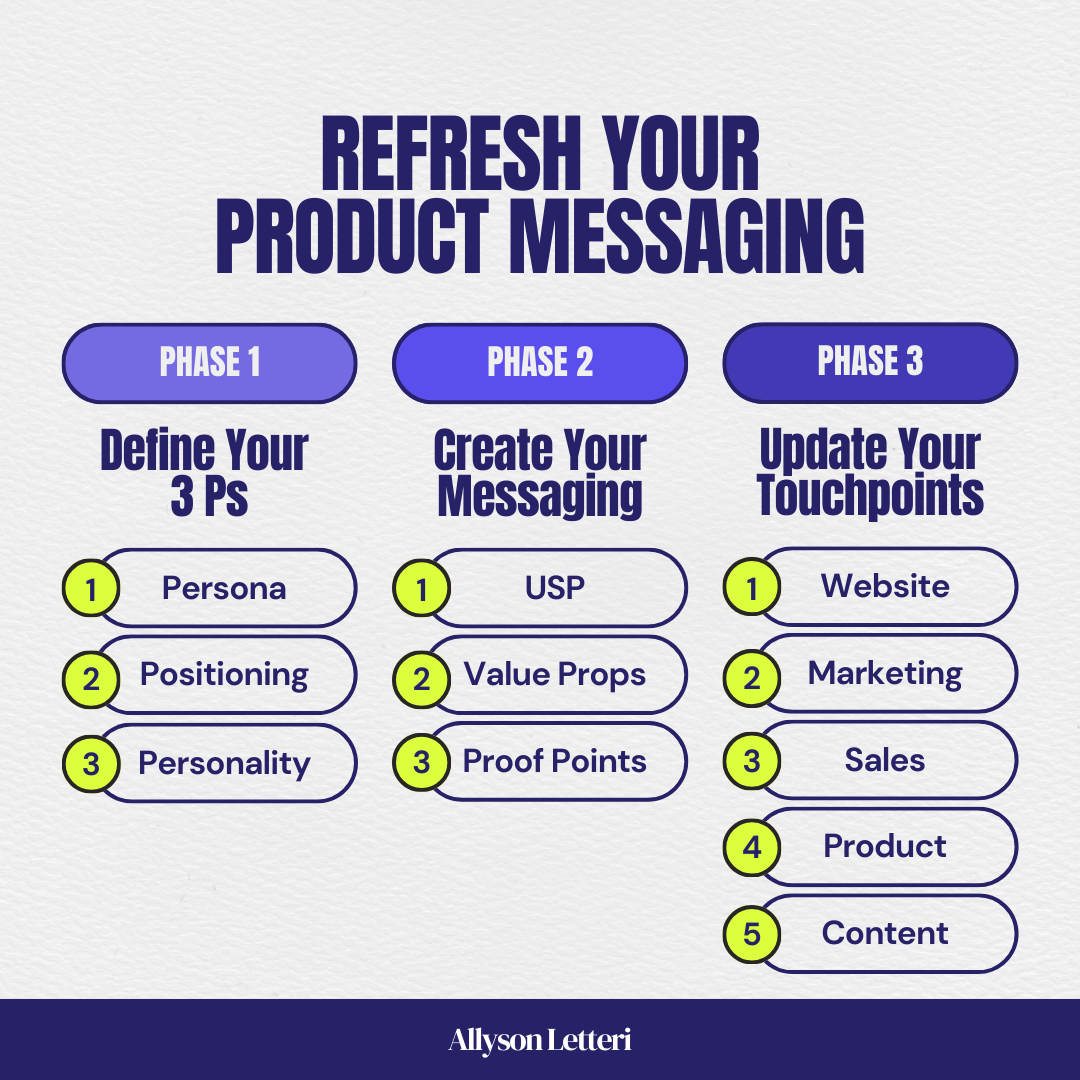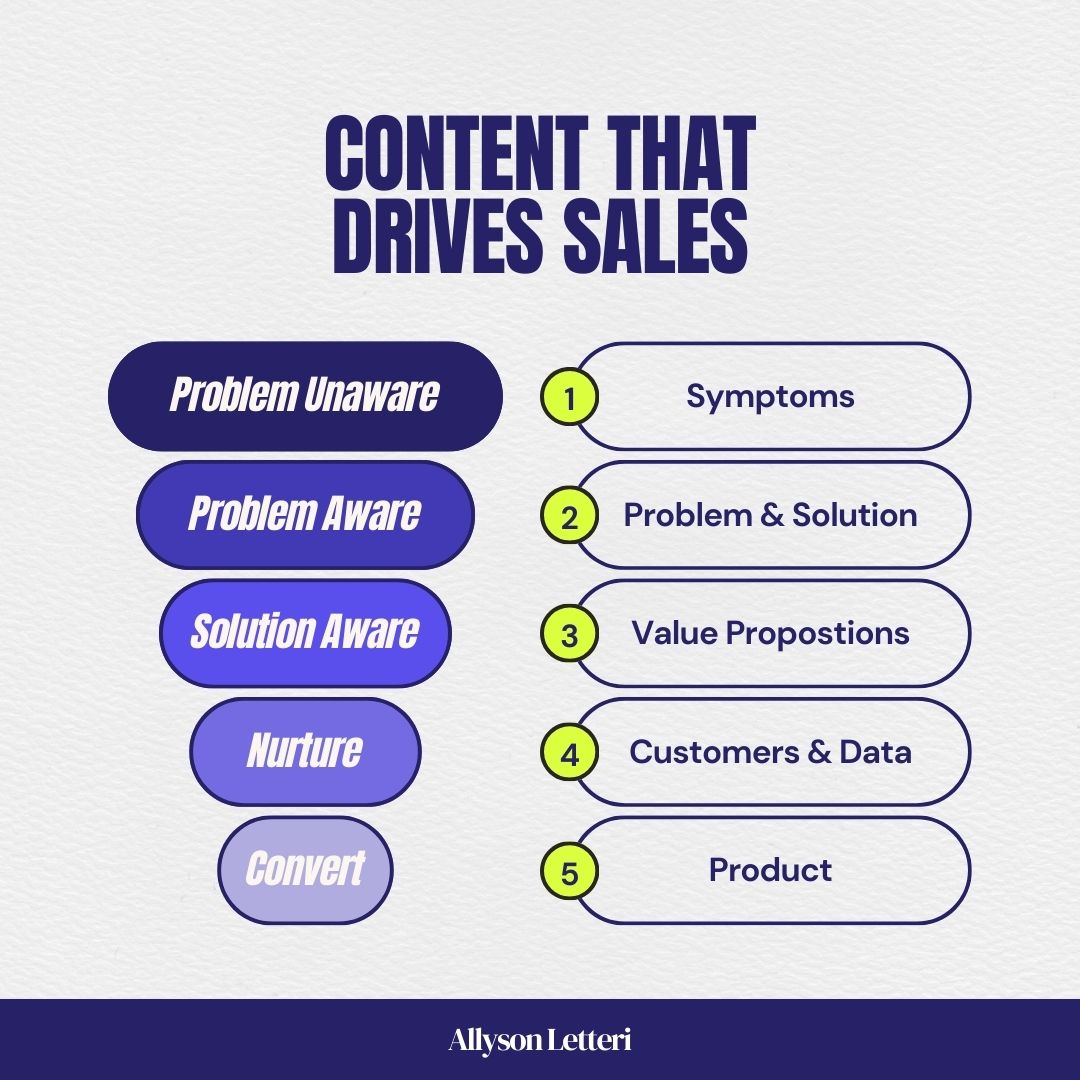A FOUNDER ASKED:
Do we really need to build personas for marketing? What’s the best way to create them?
WHY PERSONAS MATTER IN B2B MARKETING
Many founders ask whether they actually need to build personas before crafting messaging and marketing collateral. The short answer: Yes!
Why? The right personas serve as a filter and guide for most marketing decisions.
Without them, your messaging becomes a guessing game, leading to wasted time, misaligned content, and missed revenue opportunities. A well-defined persona helps you speak directly to your ideal customers, who will feel like your product was built just for them.
Personas provide:
- An empathy shortcut: They consolidate your team’s understanding of your ideal customer so you can address their specific needs in your messaging.
- A team north star: Personas align your team on the must-know insights about your ideal customer. They help everyone think like your prospects and customers.
- A filter for marketing decisions: When testing channels or crafting campaigns, personas help you understand what will resonate with potential buyers.
Without an Ideal Customer Profile (ICP) and personas, your messaging will likely miss the mark. Your ideal customers will feel confused, misunderstood, or apathetic—like your product is not for them.
You need to understand your audience to create a convincing homepage, sales deck, and content.
THE THREE LAYERS OF B2B PERSONAS
Building personas for B2B marketing involves understanding three layers:
- Ideal Customer Profile (ICP): Defines the types of companies that benefit most from your product.
- Buying Committee: Identifies the key people involved in evaluating solutions and purchasing your product.
- Persona: Highlights the needs of a specific person involved in the buying process, starting with the primary buyer.
STEP 1: DEFINE YOUR ICP
An ICP helps you focus on the types of businesses that are the best fit for your product. They help you determine what companies are (and are not) the right prospects.
Answer these questions:
- What companies benefit most from our product?
- Which customers show the highest retention and engagement?
- Which segments have the most urgent pain points that our product solves?
Characteristics to include in your ICP:
- Firmographics: Industry, company size, revenue, locations.
- Technographics: Software stack, budget, team structure, tech mindsets.
- Pain Points: What challenges does the company face (that your product solves)?
- Desired Gains: What outcomes do they seek (that your product delivers)?
- Shifts: What events trigger their need for a new solution?
Example: Define your ICP
A startup offering cybersecurity solutions for e-commerce companies might define its ICP as:
- Firmographics: Mid-sized e-commerce businesses ($10M-$100M revenue).
- Technographics: Uses Shopify Plus, AWS, and has a small in-house security team.
- Pains: Frequent security threats but lacks proactive detection or quick fixes.
- Gains: Automated threat detection and reduced downtime.
- Shifts: Recently experienced a security breach or received a compliance mandate.
They’d fill in more details to capture the most important dimensions of these companies.
STEP 2: MAP YOUR BUYING COMMITTEE
In B2B sales, multiple people influence purchasing decisions. The key roles include:
- Primary Buyer: Leads the evaluation process and is often your internal champion.
- Decision Maker: Has final approval power (e.g., CFO, CEO).
- Influencers: Provide input (e.g., function heads, IT, and procurement teams).
- End Users: Use your product in their work once it’s purchased.
Your team will certainly need messaging that resonates with the primary buyer. Create that persona first since your homepage, sales deck, and content strategy will likely focus on influencing this person.
Then, consider who else you’ll need to engage in the buying process. You may need messaging to appeal to these other roles through dedicated landing pages, content, and events. Plus, you’ll create content that helps your primary buyer advocate for your solution internally.
Defining your buying committee and tailoring messaging to each persona helps you avoid one-size-fits-all messaging (which rarely works).

STEP 3: BUILD A PERSONA FOR YOUR PRIMARY BUYER
Now it’s time to develop your first persona. Start with your primary buyer, who will be the focus of many of your marketing efforts.
A strong persona includes five elements:
- Pains: What challenges and frustrations does this person experience?
- Gains: What results and outcomes do they need to achieve?
- Shifts: What events trigger their interest in a new solution?
- Blockers: What objections do they have?
- Motivators: What proof or information helps them say yes?
Strong personas capture more than just functional pain points and desired results. Be sure to include these three dimensions in the pains and gains:
- Functional: Their tasks and “to-dos.”
- Emotional: Their internal feelings and stressors.
- Social: Relationships and external perceptions.
This will help you explain not only how your product addresses your prospects’ “jobs to be done” but also how it resolves their emotional and social pain points.
USE AI TO SPEED UP PERSONA DEVELOPMENT
One common concern I hear from founders: creating personas manually can be time-consuming. AI can both speed up the process and help you incorporate more sources.
Use AI to analyze these customer data sources:
- Team interview notes about your ICP, buying committee, and personas
- Sales call transcripts
- Customer support logs
- CRM data on customer engagement
- Survey results and verbatim comments
Skip endless hours of synthesizing this data and use AI to:
- Aggregate insights from different team members and sources
- Identify recurring themes from interviews and calls
- Generate ICP and persona drafts for the team to refine
Use AI to help with:
- Segmenting companies:
- Cluster customers into different ICP groups based on behavior and needs
- Analyze how pain points and desired results differ across segments
- Surface objections and motivations from large data sets
- Identifying roles and building personas:
- Draft detailed personas, capturing the five key elements
- Surface buying criteria and objections that matter to each persona
- Identify messaging themes that resonate with each
- Suggesting content personalization:
- Suggest persona-specific messaging
- Outline personalized content strategies
- Optimize outreach sequences for different personas
USE PERSONA INSIGHTS IN YOUR MARKETING
Once you’ve developed personas, you’ll use them to inform many marketing decisions. If you’re developing updated messaging, you’ll move into the next step: positioning.
Personas will shape:
- Website Messaging: Ensure your homepage, landing pages, and product descriptions address your personas’ pain points and desired outcomes.
- Sales Enablement: Equip your sales team with persona-driven sales decks and objection-handling guides.
- Content Strategy: Create blog posts, case studies, and comparison guides that directly address each persona’s concerns.
- Paid Ads & SEO: Target personas with precise messaging and keyword strategies.
- Email Sequences: Personalize email campaigns based on personas’ motivators and blockers.
Identifying your ICP, buying committee, and personas enables your team to deliver a high-impact marketing strategy. Get help from AI to develop more precise, data-driven personas—leading to stronger messaging, better customer engagement, and faster growth.
Here’s your quick-start checklist:
- ✅ Define your ICP (firmographics, technographics, pains, gains, shifts).
- ✅ Identify your buying committee and members’ unique concerns.
- ✅ Create personas that includes pains, gains, shifts, blockers, and motivators.
- ✅ Use AI to analyze data, segment customers, and refine messaging
- ✅ Apply personas in your messaging development process.
- ✅ Use personas to guide messaging on your website, topics for sales content, and upcoming marketing campaigns.





